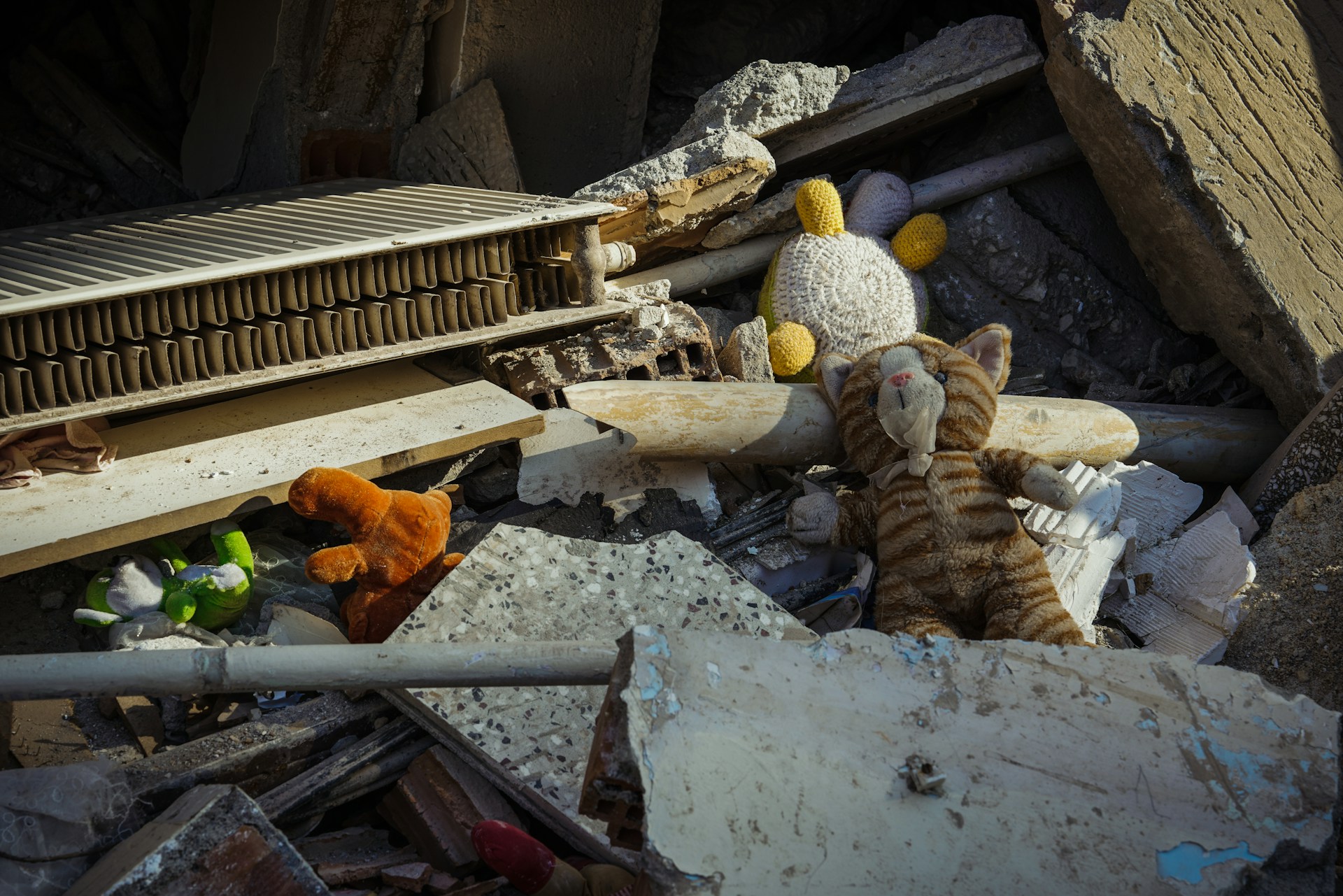Preparedness
Deadpool Killer Sentenced For Shocking Florida Murders

On Tuesday, Wade Wilson, infamously known as the “Deadpool Killer,” was sentenced to death for the brutal murders of two women in Cape Coral, Florida, in 2019.
Wilson, also dubbed the “Cape Coral Strangler,” was found guilty of strangling 35-year-old Kristine Melton and 43-year-old Diane Ruiz within hours of each other on October 6, 2019.
In June, Wilson was convicted on two counts of first-degree felony murder and two counts of first-degree premeditated murder.
The jury voted overwhelmingly in favor of the death penalty, with a 9-3 decision for Melton’s case and a 10-2 vote for Ruiz’s murder.
In April 2023, Governor Ron DeSantis signed a law reducing the jury votes needed for capital punishment from unanimous to a supermajority of eight out of twelve.
Lee County Circuit Judge Nicholas R. Thompson upheld the jury’s recommendation, stating there was “no basis” to overrule it.
“Given the facts of the case, nothing in defendant’s background or mental state would suggest that a death sentence is inappropriate,” Judge Thompson said during the sentencing.
Wilson’s attorney, Lee Hollander, argued for two life sentences instead, citing Wilson’s brain damage from drug addiction and abandonment issues stemming from his adoption.
Wilson’s adoptive parents wrote a letter pleading for clemency, describing their son as “a joyful child” who later became “withdrawn, erratic, and depressed.”
“Wade was a joyful child, loved his parents and sisters, and was loved immensely in return,” the parents wrote.
“But over the teen years, and then especially in the early years of adulthood, Wade began to slip away from us, becoming withdrawn, erratic, and depressed at first. Then his addiction was added to mental illness and [he] became, frankly, paranoid and delusional and a sense of loss became increasingly sharp.”
They continued, “They put a tiny band-aid on it, and then sent him back into the world without a diagnosis, medication, and without follow-up care. We tried to hold pieces together but had no idea how to find the support Wade needed to be the person he was inside.”
“In those tragic moments when the cancer of severe mental illness and addiction won, we lost our son, grandson, brother, nephew, and uncle,” the family said.
The parents concluded, “Despite everything, Wade is still our son.”
Let us know what you think, please share your thoughts in the comments below.

Preparedness
Master Wildfire Defense with These Essential Home Protection Tips

Understanding the unpredictable nature of wildfires is crucial for homeowners looking to protect their properties. The primary culprits for home ignitions during these events are embers and small flames. Embers, which are burning fragments of wood or vegetation, can be carried by the wind for over a mile, igniting homes and other structures in their path.
To effectively shield your home from the threat of wildfires, it’s essential to focus on two main factors: the quality of the defensible space around your home and the structural ignitability of the building itself. These elements together form what is known as the Home Ignition Zone (HIZ), which encompasses both the structure and the immediate surroundings.
The goal is to minimize or eliminate fuels and ignition sources within this zone. Defensible space is a crucial element in this strategy, involving the modification of the area around a home to reduce fire hazards. By treating or removing natural and manmade fuels, you can slow the spread of a wildfire and reduce the risk of it reaching your home.
Creating an effective defensible space requires dividing your property into management zones, each with specific treatment techniques. This approach should be applied to all structures on your property, including garages and storage buildings. The design of these zones will depend on factors such as the types and sizes of vegetation on your property.
The first zone to address is the area from the home to five feet out. This non-combustible area is the most vulnerable to embers, making it crucial to start here. Begin by cleaning roofs and gutters of debris and repairing any loose shingles or tiles to prevent ember penetration.
“Replace or repair any loose or missing shingles or roof tiles to prevent ember penetration.”
Additionally, install 1/8 inch metal mesh screening on vents to reduce ember intrusion. Remove flammable materials from wall exteriors and underneath decks or porches.
The next zone extends from five to thirty feet from the home. Here, careful landscaping and hardscaping can influence and decrease fire behavior. Keep lawns and native grasses mowed to a height of four inches and remove ladder fuels to prevent surface fires from reaching tree crowns. Trees should be spaced with a minimum of eighteen feet between crowns, increasing with slope.
Finally, the zone from thirty to one hundred feet, extending to two hundred feet, focuses on interrupting the fire’s path and keeping flames smaller and on the ground. Remove vegetation near outbuildings and ensure adequate spacing between tree canopies.
In areas with high fire danger that are difficult to access, consider using goats for vegetation management. Goats are natural browsers and can effectively prune brush and low tree branches to recommended heights. They also target non-native species that increase wildfire frequency due to their flammability.
“If you throw a bunch of matches into a forest, some small percentage of them might actually start a fire,” explains Bethany Bradley, a professor of environmental conservation at UMass Amherst. “But if you throw a bunch of matches into a big hay pile, there’s a good chance that many of those will catch fire.”
For those planning to build or renovate homes, exploring the latest fire-resistant materials for roofing and siding is advisable. A simple metal roof without dormers can shed embers effectively, reducing the risk of ignition. Regularly consult with local fire professionals for evaluations and updates on fire-resistant technologies to enhance your property’s protection against wildfires.
Let us know what you think, please share your thoughts in the comments below.
Preparedness
Debunking Earthquake Myths: What You Really Need to Know

Throughout history, people have concocted a variety of imaginative explanations for earthquakes, from mythical creatures to divine interventions. While modern geology has debunked these ancient ideas, several misconceptions about earthquakes continue to persist today. These myths can be just as misleading and potentially dangerous when it comes to preparing for these powerful natural events.
One prevalent myth is the notion that earthquakes can cause the ground to open up and swallow people, cars, and buildings whole. However, experts largely dismiss this idea. The United States Geological Survey (USGS) explains that “shallow crevasses can form during earthquake-induced landslides, lateral spreads, or from other types of ground failures, but faults do not open up during an earthquake.” Earthquakes occur when two blocks of the earth’s crust slide past one another, held together by friction. If a fault were to open, the friction would be lost, and no earthquake would occur.
Recent research from Caltech University, published in the journal Nature, suggests that “thrust faults” can create gaps in the earth’s surface up to 160 feet wide before snapping shut. However, these phenomena have been observed only in oceanic settings, and there are no recorded incidents of such crevasses swallowing people or buildings. Therefore, this scenario should not be a primary concern in earthquake preparedness.
Another common misconception is the belief that doorways provide the safest refuge during an earthquake. This advice stems from historical examples of old adobe homes in California, where doorframes remained standing amid the rubble. However, as the University of Washington Department of Emergency Management notes, “In modern houses, the doorways are no stronger than any other part of the house, and the doorway does not protect you from the most likely source of injury – falling or flying objects…you are safer under a table.”
Living in urban or suburban areas often gives a false sense of security regarding disaster preparedness. It’s easy to assume that essential resources will remain accessible, but a major earthquake can disrupt even the most basic services. Severed roads, power, and water lines can isolate communities, making it difficult to obtain necessities. This is why organizations like FEMA now recommend preparing a two-week emergency kit instead of the traditional 72-hour one. For optimal preparedness, it’s wise to have at least three months’ worth of food, water, and gear.
Finally, there’s a misconception about the reliability of insurance in the aftermath of natural disasters. Insurance companies operate as businesses, not charities, and their main priority is their financial stability. Katherine R. H. Wagner from the Stanford Institute for Economic Policy Research points out that “a single natural disaster could bankrupt insurance companies,” leading some to hesitate in offering natural disaster coverage.
In conclusion, it’s crucial to dispel these myths and rely on accurate information when preparing for earthquakes. Understanding the realities of these natural events can help ensure better safety and preparedness for everyone involved.
Let us know what you think, please share your thoughts in the comments below.
Preparedness
Discover the Ultimate Backup Plan for Any Disaster

In the unpredictable world of disasters, having a backup plan is crucial. Often overlooked until it’s too late, emergency supplies can be destroyed by the very events they are meant to mitigate. This not only results in replacement costs but also leaves you without essential survival items at the worst possible time.
Enter the bug-out bag—a prepper’s perfect “Plan B.” While it might not be immediately recognized as such, your bug-out bag can serve as a critical backup during a shelter-in-place emergency.
One classic prepper strategy is to distribute emergency supplies throughout different parts of the house. This way, if one section is compromised, not all is lost. However, if you haven’t managed to do this, a bug-out bag stored in an easily accessible spot, like under the stairs or next to the door, ensures you have a fallback option.
In the words of many disaster survivors, “during most major emergency events, there’s a strong chance you’ll be alone the first few days waiting for even the slimmest rescue assistance.” A well-stocked bug-out bag should provide 72 hours of food, which can be just enough to tide you over until help arrives or you can secure a more sustainable food source. While a two-week food supply is ideal, as even FEMA advises, having enough for three days can be crucial during the initial chaos.
Water is another critical component. A 72-hour supply of water can be a lifesaver until you find a more substantial source. “If your bug-out bag has a half-decent water filter, you’ve got the most important tool to stay hydrated for many weeks or months.” Even a basic water source, like a pool, can become viable with a good filter, ensuring you stay hydrated.
Beyond severe disasters, your bug-out bag’s water supply can be invaluable during minor emergencies like power outages, boil advisories, or frozen pipes. Having those 72 hours of water on hand can prevent you from tapping into your long-term reserves prematurely.
Power outages are a common denominator in many disasters, be it earthquakes, hurricanes, wildfires, or blizzards. Your bug-out bag should include power sources like batteries and solar chargers. These can keep essential devices, such as flashlights and chargers for radios or cell phones, operational. “A flashlight keeps you from injuring yourself in the dark, and a device charger keeps your radio and/or cell phone juiced.”
In any disaster scenario, a power outage is almost guaranteed. Having extra light sources in your bug-out bag ensures you are prepared, even if one breaks or you have additional people needing assistance.
Ultimately, while no plan is foolproof, a well-prepared bug-out bag can be your best ally when disaster strikes, ensuring that your “Plan B” is as robust as possible.
Let us know what you think, please share your thoughts in the comments below.
-

 Tactical1 year ago
Tactical1 year ago70-Year-Old Fends Off Intruder with Lead-Powered Message
-

 Tactical1 year ago
Tactical1 year agoVape Shop Employee Confronts Armed Crooks, Sends Them Running
-

 Preparedness11 months ago
Preparedness11 months agoEx-Ballerina’s Guilty Verdict Sends Tremors Through Gun-Owner Community
-

 Preparedness10 months ago
Preparedness10 months agoGood Samaritan Saves Trooper in Harrowing Interstate Confrontation
-

 Tactical1 year ago
Tactical1 year agoMidnight SUV Theft Interrupted by Armed Homeowner’s Retaliation
-

 Survival Stories2 years ago
Survival Stories2 years agoEmily’s 30-Day Experience of Being Stranded on a Desert Island
-

 Preparedness10 months ago
Preparedness10 months agoArizona Engineer’s Headless Body Found in Desert: Friend Charged
-

 Preparedness10 months ago
Preparedness10 months agoBoy Saves Dad from Bear Attack with One Perfect Shot